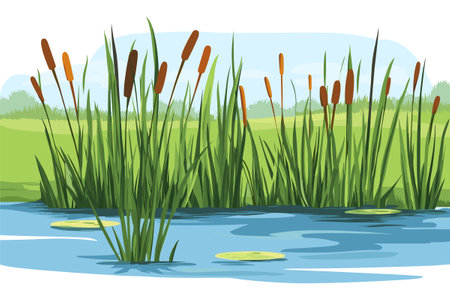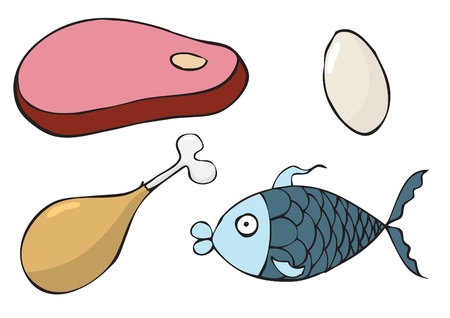Understanding the Bass Spawning Cycle
If you want to consistently catch more bass during spring, it’s crucial to understand the different phases of the spawning season. The bass spawning cycle is generally divided into three main periods: pre-spawn, spawn, and post-spawn. Each phase brings changes in bass behavior, habitat preferences, and feeding patterns. During the pre-spawn phase, as water temperatures start to warm up, bass move from deeper wintering holes toward shallow flats and coves in preparation for spawning. They become more active and aggressive as they bulk up on food. Once the actual spawn begins, female bass lay eggs on prepared beds while males guard them fiercely—making their movements more predictable but also sometimes less interested in feeding. After the spawn, during the post-spawn period, tired females retreat to deeper water to recover, while male bass continue to guard fry near the nests before eventually returning to normal patterns. Knowing how bass use their environment differently throughout each stage helps you choose better fishing spots, lures, and techniques for every part of the spawning season.
2. Top Pre-Spawn Strategies
As bass begin to transition from their winter haunts and prepare for spawning, they become aggressive and start feeding heavily to build up energy reserves. Targeting these fish during the pre-spawn can be incredibly rewarding if you use the right techniques, lures, and locations. Understanding their behavior at this stage is crucial for maximizing your catch rates.
Key Techniques for Pre-Spawn Bass
- Slow Rolling Spinnerbaits: This technique works well in cooler water temps when bass are moving toward shallow flats. Retrieve spinnerbaits slowly along points and channel edges to trigger strikes.
- Jig Fishing: Jigs mimicking crawfish or baitfish are highly effective around rocky banks, submerged timber, or brush piles where bass are staging.
- Suspend and Twitch Jerkbaits: Work suspending jerkbaits with a twitch-pause-twitch motion over deeper structure or just off spawning flats to entice reaction bites from active feeders.
Lures That Get Results
| Lure Type | Best Conditions | Presentation Tips |
|---|---|---|
| Spinnerbait | Muddy to stained water; windy days | Slow roll near structure; bump into cover |
| Jig & Craw Trailer | Rocky bottoms; cooler temps | Hop or drag along bottom; pause frequently |
| Suspending Jerkbait | Clear water; sunny or cloudy | Twitch-pause-retrieve over drop-offs |
Prime Pre-Spawn Locations
- Main Lake Points: These act as highways for migrating bass moving from deep winter holes to shallow spawning grounds.
- Secondary Points: Located inside coves, these spots hold staging fish ready to move up as temperatures rise.
- Shallow Flats Adjacent to Deep Water: Bass often stage just off these areas before committing to spawn beds. Use your electronics to locate subtle depth changes and isolated cover.
Tactical Advice
Focus on fishing slower presentations as water temps creep into the low 50s (°F), but be ready to speed things up with reaction baits on warmer afternoons. Adjust lure color based on water clarity—use natural colors in clear water and brighter hues in stained conditions. By dialing in your approach based on conditions and bass movements, you’ll put yourself in the best position to capitalize on aggressive pre-spawn fish.

3. Tactics for Success During the Spawn
When bass are on their beds during the spawn, anglers have a unique opportunity to target these fish, but it’s important to use ethical tactics that both increase your chances of success and respect conservation principles. Bedding bass can be aggressive in defending their nests, making them more likely to strike at lures that appear to threaten their eggs. Soft plastic baits like creature baits, lizards, and tubes are top choices—try Texas-rigging or wacky-rigging for subtle presentations. Sight fishing is popular during this phase; polarized sunglasses help you spot beds in shallow water. Approach quietly and avoid casting shadows over the nest to keep from spooking wary bass.
Best Practices for Catching Bedding Bass
It’s crucial to remember local fishing regulations before targeting bedding bass, as some areas restrict bed fishing to protect spawning populations. Always check your state’s rules regarding catch-and-release requirements or closed seasons during the spawn. Practice selective harvesting—release large females after a quick photo to ensure the next generation of bass survives. If you remove a bass from its bed, handle it gently and return it quickly so it can resume guarding its eggs.
Conservation-Minded Angling
Respecting the resource means more than just following the law—it’s about preserving quality fishing for years to come. Avoid disturbing vegetation around the nest, which provides cover for fry once they hatch. Use barbless hooks if possible to minimize injury, and limit time out of water when photographing your catch. Encourage others in your fishing community to do the same by sharing best practices and educating newcomers about responsible spawning season angling.
Final Thoughts
By combining effective tactics with a conservation-first mindset, you’ll not only catch more bedding bass but also play a key role in sustaining healthy fisheries. Spawning season is a special time on the water—make it count by respecting both the fish and future generations of anglers.
4. Capitalizing on Post-Spawn Patterns
As the spawning season winds down, bass begin their migration from shallow beds back to deeper water. This post-spawn period presents unique challenges and opportunities for anglers looking to maximize their catch rates. Understanding how to adapt your tactics as bass recover from spawning is key to staying ahead of the game during this transitional phase.
Understanding Post-Spawn Bass Behavior
During post-spawn, bass are often exhausted and less aggressive, focusing more on recuperation than feeding aggressively. However, female bass typically move to slightly deeper edges near spawning areas to regain strength, while males may linger in shallower water a bit longer to guard fry. Recognizing these patterns will help you pinpoint where to target your casts effectively.
Adjusting Your Approach for Success
| Condition | Recommended Tactics | Bait Suggestions |
|---|---|---|
| Bass recovering in deeper water | Slow presentations, fish near drop-offs or ledges adjacent to spawning flats | Soft plastics (worms, creature baits), deep-diving crankbaits |
| Males guarding fry in shallows | Target visible fry balls, use subtle retrieves to avoid spooking fish | Weightless stick baits, finesse jigs, small swimbaits |
| Transitional movement between shallow and deep zones | Fish transition routes like creek channels or points; vary depth until you find active bass | Suspending jerkbaits, medium-diving crankbaits, Carolina rigs |
Prime Locations to Target Post-Spawn Bass
- Main lake points: Bass use these as highways moving between shallow and deep water.
- Outside weed lines: Offer cover and easy access to both food and safety.
- Drops offs near spawning flats: Especially productive as females recuperate.
- Coves with abundant baitfish: Look for shad or bluegill activity which draws hungry bass.
Tweaking Presentation for Finicky Fish
If you notice sluggish bites, don’t be afraid to downsize your lures or slow your retrieve. Sometimes a finesse approach—like a shaky head worm or a Ned rig—can trigger strikes when standard tactics fail. Pay attention to water clarity and sunlight too; natural colors work best in clear water, while something flashier can help in stained conditions.
Pro Tip: Stay Versatile!
The post-spawn transition can be unpredictable. Be ready to switch up locations, lure types, and presentations based on what the fish are telling you that day. By capitalizing on these post-spawn patterns and adjusting your strategy accordingly, you’ll continue putting quality bass in the boat all season long.
5. Essential Gear and Lure Recommendations
Having the right gear is a game-changer when it comes to catching bass during all stages of the spawn. Whether you’re fishing pre-spawn, spawn, or post-spawn, your setup can make or break your day on the water. Here’s what you need to keep in your arsenal for consistent success.
Must-Have Rods, Reels, and Tackle
Rods: Versatility is key for spawning season. A 7’ medium-heavy fast action casting rod covers most bases, giving you enough backbone for hooksets and sensitivity to detect subtle bites. For finesse techniques like drop shotting or shaky heads—especially during post-spawn—a 6’9” to 7’ spinning rod in medium power is perfect.
Reels: Opt for a baitcasting reel with a smooth drag system and at least a 6.4:1 gear ratio for quick line pickup. For spinning setups, choose a reel in the 2500-3000 size range to balance power and manageability, especially when targeting bedding fish or working lightweight presentations.
Tackle: Don’t leave home without a variety of hooks (EWG, offset, and drop shot), tungsten weights (for Texas rigs and Carolina rigs), fluorocarbon line (10-15 lb test for casting; 6-8 lb for spinning), and terminal tackle like snaps and swivels. Keep plenty of soft plastics, jigs, and hard baits handy to adapt as conditions change throughout the spawn.
Bait Colors and Setups That Consistently Produce
Pre-Spawn
Bass are aggressive and feeding up before moving shallow. Go with moving baits like lipless crankbaits in red or craw patterns—these trigger reaction strikes in warming water. Spinnerbaits with white/chartreuse skirts also excel on windy days or stained water.
Spawn
This is sight-fishing season. Soft plastics are king—try white or bubblegum-colored creature baits or lizards so you can see them easily on beds. Texas-rigged tubes and wacky rigged Senkos in natural green pumpkin or watermelon hues fool even finicky bed fish.
Post-Spawn
Bass get sluggish but remain catchable with finesse tactics. Ned rigs, drop shots, and small swimbaits in shad or bluegill colors work well around fry balls and cover where females recuperate. Topwater frogs or poppers can also draw explosive strikes early morning or late evening as bass recover their appetite.
Pro Tip:
Always match your bait color to water clarity: go bright on muddy days and natural on clear water for best results. Rotate through lure types until you find what’s working that day—flexibility is often the difference between skunking out and filling your livewell!
6. Conservation and Ethical Bass Fishing
Handle Bass Responsibly
During the spawning season, bass are particularly vulnerable as they guard their nests and eggs. Always handle bass with wet hands to minimize slime removal, which helps protect them from disease. Avoid squeezing or holding the fish by the gills, and use a rubberized net if possible. When taking photos, keep the fish out of water for as little time as possible—ideally less than 30 seconds.
Protect Fisheries for Future Generations
Catch and release is highly encouraged during pre-spawn, spawn, and post-spawn phases to ensure healthy bass populations. Gently return bass to the water near their nest sites so they can continue protecting their eggs or fry. If you practice selective harvest where legal, only keep smaller, non-breeding fish to help maintain a balanced fishery.
Follow U.S. Regulations
Every state has its own fishing seasons, size limits, and bag limits—especially during spawning periods. Familiarize yourself with local rules before heading out. Some areas may even have closed seasons or designated catch-and-release-only zones to protect spawning bass. Respect posted signage and always check updated regulations on your states Department of Natural Resources website.
Practice Ethical Angling
Lead by example on the water by picking up litter, reporting poaching activity, and educating others about responsible fishing practices. Consider using barbless hooks for easier releases and avoid targeting visible bedding bass if local regulations advise against it. By making ethical choices, you help preserve America’s bass fisheries for future anglers.


